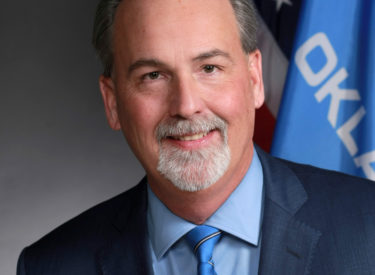Healthcare Working Group Update
Ponca City Now - September 12, 2019 1:36 pm

By Sen. Bill Coleman
Between construction and interim studies, the Capitol is a blur of activity. Major work is continuing throughout the rotunda on all floors as well as in the House and a few other areas of the building.
Bringing the 1917 452,000-square-foot building into the 21st century has been a massive undertaking, but it will be incredible for state agency tenants and visitors once it’s complete. You can follow the renovation project on Facebook at “Oklahoma Capitol Restoration,” Twitter at #OKCapitolRestoration or at www.capitolrestore.ok.gov.
We’ve now had four HealthCare Working Group meetings. During the first meeting, we heard from the State Department of Health and the Oklahoma Health Care Authority. They shared Oklahoma’s various national health rankings as compared to other states. According to America’s Health Ranking 2018 Edition, our state ranked 47th overall, which is far from being a Top 10 state.
We also got an overview of Medicaid, the eligibility criteria, services provided, population groups and other information.
The next meeting included a presentation by the Department of Corrections about how healthcare is provided for those in DOC custody, challenges they face and about the Medicaid eligibility limitations for inmates. We also learned about the re-entry process, medical parole and nursing home placement. Mental health is a major concern in DOC as 64 percent of offenders suffer from a mental health issue. Finally, the Oklahoma Health Care Authority and Trust explained their functions and mission as well as their work in DOC.
During the third meeting, MyHealth Access Network’s presentation showed a need for better data in our state’s healthcare systems. Specifically, they’d like to see a statewide health information exchange, which is a uniform and secure place for data storage and transmission. This would improve patient care and, ultimately, save lives.
Next, the American Cancer Society spoke about the tobacco’s effects on public health. Then we heard about social determinants of health from the Route 66 Project, the OU School for Public Health, Stigler Health and Wellness Center and the State Department of Health.
Our last meeting included a breakdown of health coverage statewide including both government programs and private insurance by the Deputy Secretary of Health and Mental Health. We also heard from a national expert with Mostly Medicaid, a private consulting company, about the different payer models for healthcare. The speaker focused on managed care, which is where states contract with companies, usually managed care organizations (MCO’s), to operate the state Medicaid program. Lastly, we got an in-depth overview by America’s Health Insurance Plans of managed care and how other states are utilizing it.
We have received a tremendous amount of information so far. We took off this week to give us time to go over all the data. Our next meeting will be Wednesday, September 18. Again, these are public meetings and can be watched or listen to Live at www.oksenate.gov.
In closing, I want to remind you about a new free tool available to the public. The Legislature is working hard to improve transparency and accountability among our state agencies. Advancements in technology are helping with this effort. A new website, Oklahoma Checkbook, was launched recently that provides everything from agency budget overviews to payroll, travel and vendor information. It’s an interactive and user-friendly format.
The site is overseen by the Office for Management and Enterprise Services (OMES). They want the public to look over the information and share any ideas they have for potential future cost savings. A few budgetary and financial issues and miscalculations have already been discovered and addressed. The more eyes on the state’s checkbook, the better, so feel free to share any ideas or concerns you have.
You can contact me at the state Capitol by calling (405) 521-5581 or by email at [email protected].



